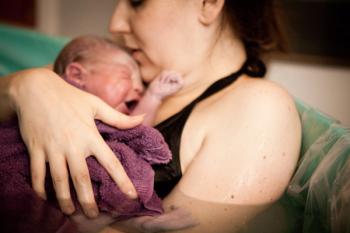
Ultrasound vs. MRI to detect uterine leiomyomas
A prospective observational study in the Journal of Ultrasound in Medicine has concluded that for pretreatment evaluation of uterine fibroids (UF), transabdominal contrast-enhanced ultrasound (CEUS) represents a viable alternative to traditional contrast-enhanced magnetic resonance imaging (MRI).
CEUS also provides a test of choice in patients with a contraindication to MRI.
Said principal investigator Chris DeMauro, MD, chief of body imaging and director of ultrasound at Christiana Care Health Services in Newark, Delaware, “CEUS is an exciting and relatively new exam in the United States, and I am constantly thinking of new ways to use this technology.”
As a trained radiologist in body imaging, Dr. DeMauro performs and interprets both pelvic ultrasound (US) and MRI exams for the evaluation of UF.
“While discussing the benefits of CEUS with some of my training residents and reviewing an MRI of the pelvis for fibroids, I developed a hypothesis that a CEUS of the pelvis should perform similarly to MRI in identifying fibroids,” Dr. DeMauro told Contemporary OB/GYN.
Below are CEUS and MR images of the same patient. Both images depict avid enhancement of the uterine myometrium and a single fibroid without enhancement.
Dr. DeMauro noted there is tremendous overlap in these two exams, with the primary difference being contrast enhancement previously not available for US. “The biggest challenge was optimizing the scanning protocol for CEUS,” he said. “After discussions with experts in the field of CEUS, we quickly developed a robust protocol that was easy to follow and to replicate.”
The study consisted of 26 premenopausal women (mean age 43.6 years) with a UF who underwent both a transabdominal CEUS and MRI exam at Christiana Care Health Services between March 2018 and July 2019.1
The CEUS exam is performed transabdominally and the uterus is evaluated after the intravenous injection of US contrast (microbubbles).“These microbubbles resonate when under the US beam, thus allowing the visualization of vascularity of the uterus and fibroids, similar to a contrast-enhanced MRI,” Dr. DeMauro said.
For the study, the mean uterus size was 13.0 cm, with a mean time of 6.7 days between the two exams, but 12 patients had both exams on the same day.
A total of 126 fibroids (≥1 cm) were identified in the 26 patients, of which 91.3% (n = 115) were identified by both modalities, whereas 7.1% (n = 9) were identified by MRI only and 1.6% (n = 2) by CEUS only.
The study found a high correlation between the two modalities for the number of fibroids identified per patient (r = 0.97; P < 0.001).
There were also no significant differences between the two imaging techniques in fibroid number, size, location and enhancement for each patient.
Dr. DeMauro is not surprised by the study’s findings. “With my experience in both CEUS and MRI, I expected CEUS to perform well,” he said.
Dr. DeMauro believes CEUS of the pelvis “is a terrific alternative to MRI to identify/characterize fibroids and assess enhancement prior to uterine artery embolization (UAE) or myomectomy. In some scenarios, this may be the study of choice for the ordering clinician.”
CEUS is ideal for patients not only with a contraindication to MRI, but for those who may have an allergy to the contrast, kidney dysfunction or claustrophobia, according to Dr. DeMauro.
“Furthermore, CEUS is very well tolerated by patients and is a fraction of the cost of MRI,” he said. “In fact, many of the study patients commented on how CEUS was much more tolerable than MRI.”
Dr. DeMauro has begun a cost-effectiveness analysis of CEUS pelvis versus MRI pelvis.
__
Dr. DeMauro reports no relevant financial disclosures.
__
Reference
- Chhabra P, Daugherty R, LeNoir AM, et al. Comparison of contrast-enhanced ultrasound versus magnetic resonance imaging in the detection and characterization of uterine leiomyomas. J Ultrasound Med. Published online September 15, 2020. doi:10.1002/jum.15495
Newsletter
Get the latest clinical updates, case studies, and expert commentary in obstetric and gynecologic care. Sign up now to stay informed.











